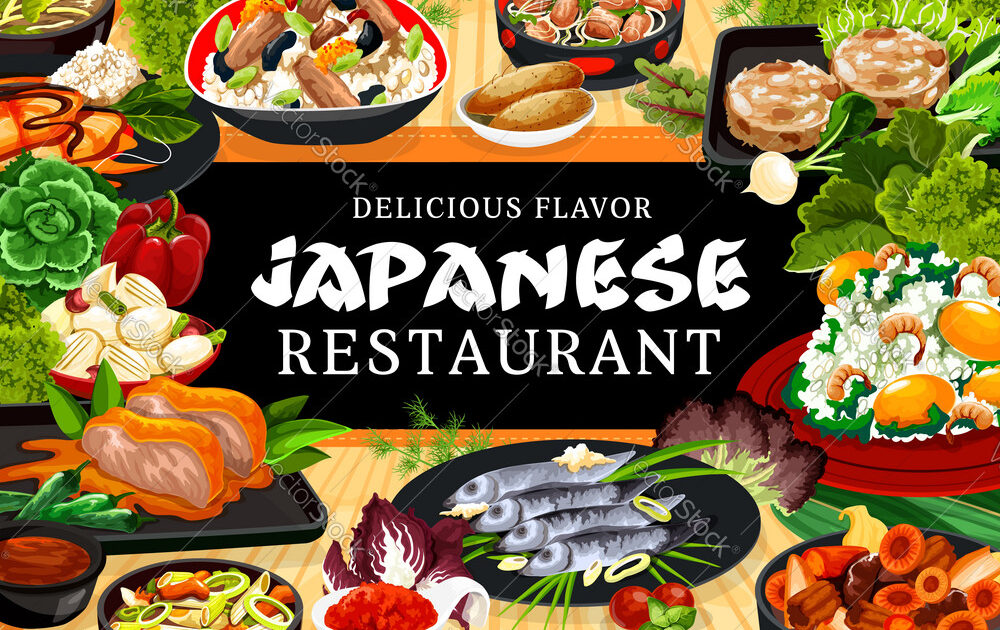Tokyo is the place to be for foodies, pulsing with excitement and dripping with Michelin stars. Dishes are cooked with care and regard for seasonal ingredients, from simple yakitori shops serving skewered grilled chicken to multi-course traditional kaiseki feasts. But the city’s culinary brilliance is not confined to Japanese cuisine: there is fantastic Italian, exquisite Chinese, and a genre-defying French style that deserves its category.
If you are wondering where to eat in Tokyo, this post will come in handy. We have featured the best restaurant in Japan where you could dine within budget.
Best Restaurant In Japan:
You can choose the best Japanese restaurant in Japan using this list:
1. Suetomi
Chef Yasuo Suetomi moved on to a new stage and founded Suetomi three years after the beloved Kasumicho Suetomi closed. A range of delectable foods complements the elegant and unpretentious atmosphere that attracts the best, matching the owner’s attitude. The restaurant offers a genuine immersion into the outstanding food, which has been further enhanced by his honed talents and vision.
Despite the Shibuya address, the Japanese restaurant is in a secluded nook that is probably seldom visited unless there is a special reason. Masatake Fukumori, the 7th generation of the Tsuchiraku kiln from Iga Marubashira, created the wonderful signboard of Suetomi used as a reference to discovering the location.

He is been a long-time buddy of the chefs and a powerful influencer. When you go through the door, the first thing you see is an artwork by Lee Ufan constructed of Japanese paper. The white sculpture from the Wind series on the wall provides a relaxing tone for the next eating experience.
The excitement is amplified by the towering ceilings and white-based flow lines that go right into the rear. There are six chairs at the counter on the other side of the paper screen. On the wall are delicately placed Japanese flowers indicative of the four seasons, such as mountain hydrangeas.
In the flamboyant area, a magnificent single-plate counter constructed of Kiso cypress stands serenely. It is a visual feast to be able to observe the chef’s dexterity without being obstructed. Kai Kristiansen chairs from Denmark are not only comfortable, but they also bring together the classic elegance of Japan and Scandinavia.
Two individual rooms for 4 and 6 guests are tucked away behind a passageway with an exposed aggregate surface. The latter chamber has a prized Kamidai cedar table. Every material utilized within the restaurant is unique, such as the door, which was handcrafted by a Karakami craftsman in Kyoto, and the most up-to-date technology is used even in small aspects like ventilation. This place is considered a great restaurant in Osaka Japan.
Read Here: Best Indian Couples Who Redefine Relationship Goals
2. Oryori Matsuyama
This Japanese restaurant in Kitakyushu, Kyushu’s northern peninsula, teaches you about Japanese culture and traditions. Chef Shozo Matsuyama uses mostly local ingredients in his dishes, which he delivers in his distinctive way. The meals depict not just the beauties of the seasons, but also the subtleties and profundity of Japanese cuisine.
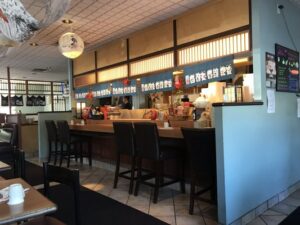
Chef Matsuyama is known for his warm hospitality and genuine concern for his customers, and Oryori Matsuyama has a loyal following of regulars and ardent supporters. The restaurant first opened in 2011, then shuttered for a short time before reopening in 2019 following improvements.
In 2014 and 2019, the Michelin Guide awarded the restaurant one star, attesting to its magnificence. The sleek stone facade of the restaurant is the first thing you will notice when you go in. As you enter, you will notice Shikoku Aoishi stones, which are said to bring good luck and create a particular mood. This place will give you the vibes of the best American restaurant in Japan.
3. Sushi Gosuian
Keita Tsutsui, the restaurant’s owner, has an uncommon history of being completely self-taught in sushi skills. His commitment to sushi is unmatched, and he moved his family from Kochi to Hakata to create his restaurant. He wants his patrons to focus solely on sushi, as seen by his omakase menu, which is dominated by nigiri.
Sushi Gosuian, a three-minute walk from Ohori-Koen Park, launched in October 2017. The restaurant is situated in a peaceful residential neighborhood. The minimalist atmosphere is reminiscent of a tea ceremony chamber, with no extraneous ornamentation. The counter is fashioned out of a single piece of ginkgo wood and has only six chairs that are evenly placed.
A calm and comfortable eating experience is further enhanced by the high chairs with big seats making this place the best sushi restaurant in Japan. This is a spot where you can focus solely on the sushi. His grandfather’s Gosuido, a Japanese calligraphy tool business in Kokura, Fukuoka, inspired the name Gosuian. His grandpa wanted him to take over the store, but he decided to pursue a career in the food sector.
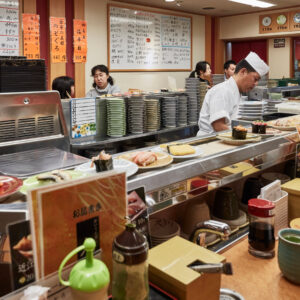
He compensated for not taking over the family company by naming his restaurant after a portion of the shop’s name. Tsutsui eventually discovered that his grandfather’s alias for calligraphy was Gosuian. This was just coincidental, but it was a very joyful one. His wife works as the restaurant’s Okami, or hostess, and crafts the floral arrangements.
The restaurant’s decor is simple, yet a hint of seasonality, such as early cherry blossoms, lends a lovely Japanese touch. The serving plates and sake cups are made of Karatsu and Imari porcelain, which adds to the grandeur.
4. Narisawa
The pioneering chef has developed something that defies categorization, resulting in the birth of a new genre known as “Innovative Satoyama Cuisine.” Each dish, drink, and piece of flatware has its intertwined tale, and as you dine here, it becomes evident why Chef Narisawa’s fan base stretches throughout the globe, not just the Japanese archipelago.
The large Aoyama boulevard runs through Tokyo’s Aoyama area, which is home to a maze of charming little lanes. You will find yourself in the quiet environment of Narisawa just a few steps away from the bustling roadway. During the day, dappled light shines through the lush green foliage, and when night comes, Narisawa transforms into an elegant area where time passes softly.
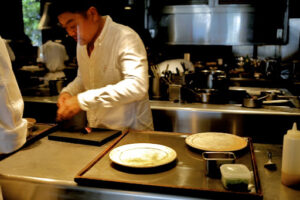
In a basic, clean space devoid of artifacts and paintings, with no background music or odors, white tones contrast with dark wood in a simple, clean interior. You may concentrate solely on the food and the company of your fellow diners. Chefs toil away in the immaculately polished kitchen, a sight to behold from behind a glass wall that keeps any odors at bay.
The extremely efficient kitchen, which includes stations for hot meals, cool plates, and accompaniments, as well as a pâtissier area, is located above an equally huge subterranean stock room, which has tanks for live fish, shellfish, and other delectable items. And, because it is not enough for all of Narisawa’s concoctions, a separate lab is nearby.
Based on Narisawa’s gourmet cuisine excursions across the world, the facility was constructed with the diner in mind. The spirit of the Rikyu tea ceremony and the essence of Wabi-Sabi aesthetics, which Narisawa memorably displayed at the 2012 “Maison et Objet” event in France, exuded creative features that chefs have been keen to mimic ever since.
Two enormous sake vaults provide outstanding sights in the dining room. The selection of largely unpasteurized sake includes an exclusive brand developed by top brewery Aramasa named Aramasa Sato Uhei NARISAWA, which was created to highlight the beauty of the big isshobin sake bottles. This is the best restaurant in Tokyo Japan.
5. Chinese Takase
Chuka Takase is a Chinese restaurant run by Kenichi Takase, who has spent the last 30 years specializing in Cantonese food. Chef Takase is regarded as one of the best hotel chefs in the world.
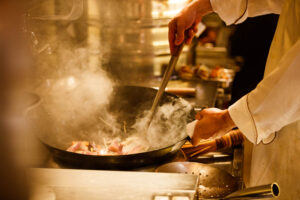
As a chef at prestigious hotels, he was used to entertaining huge groups of people, but his new restaurant has a small number of seats and a snug, intimate ambiance. The ambiance will give you the good vibe of a Mexican restaurant in Japan.
6. Tempura Miyashiro
This Ramen restaurant in Japan is quite famous for its delicacies. Naoki Miyashiro, who has previously proved his ability in several Japanese restaurants located in high-end hotels, now has his restaurant. Not just in the tempura main courses, but also in the other Japanese delicacies, his extensive culinary abilities are on full show.
Guests are seated at a counter with only eight chairs from which they can carefully study their skills and listen to the rhythmic noises of deep-frying. His history working in hotels allows his enthusiasm for true hospitality to show through, in addition to his culinary expertise. He cherishes and respects the patrons who choose to dine at his establishment.
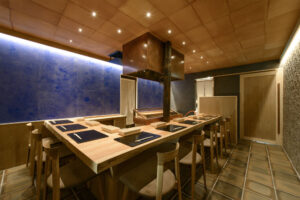
When you take a small left into Nakameguro Shotengai’s main street, you will notice a vintage home with corroded galvanized tin walls and a roof. Even if you know the restaurant’s address, you are likely to walk right by it because the facade appears like an old house. In front of the house is a vintage-looking red mailbox with the Japanese word “Miyashiro” printed on it.
Understandably, you are apprehensive about this place being a Michelin-starred restaurant. Do not be concerned; simply open the door. One of the walls is painted ultramarine, a noble color in Japan, which highlights the warmth of the wood and paper.
7. Sumiyaki Unagi Shun
Probably the best Sushi restaurant in Japan where you can enjoy the chef’s distinct sense in this location where time passes softly. Delicate but strong cuisine piques the curiosity and tastes time and time again. Sumibiyaki Unagi Shun’s food revolves around delectable unagi eel, which is enhanced by seasonal ingredients. Shun’s new location contains a vast garden and gorgeous architecture and interior not conceivable in the city, as though leaving the earthly world.
The ambient garden and interior, which are located in a peaceful Shizuoka residential area, are essential to the delight of dining here. The restaurant first opened in 2010, then relocated in 2015 before returning to its current location in July 2018. The last shift was motivated by the realization that focusing on one’s cooking is nearly impossible when one is too busy.
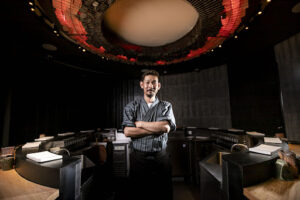
Shun has transitioned from a bustling downtown restaurant to solitude in the highlands. The rather difficult approach, which is around 20 minutes by automobile from Shizuoka station, does not deter determined gourmands from near and far. A modest blue-covered Noren takes you into a Japanese garden that tells of the seasons, with plum and maple trees lovingly tended to by the chef-owner.
He likes to stand on a huge rock and gaze out at the beautiful beauty. The restaurant is housed in a 50-year-old single-story Japanese-style structure that was recently refurbished by a well-known architect. The first thing that draws the eye upon entering the building is a four-character etched sign.
The artwork, which was given to us by a long-time client, is the result of four people’s creativity: one who wrote the lyrics, another who chose the wood, the engraver, and the lacquer artist. Chef Okada frequently expresses his gratitude to his clients, and this tale demonstrates how much they appreciate him.
8. Teppanyaki Nakamura
If you want to check a subway restaurant in Japan, then this will suit your purpose. Chef Masatoshi Nakamura, who has spent over 25 years developing his abilities at Imperial Hotel Tokyo, is in charge of the teppanyaki restaurant. On the clean, well-maintained iron griddle, Kobe Beef from Kawagishi Farm, known for producing the best grade Kobe Beef, as well as carefully chosen fish and shellfish, are cooked without oil.
Regulars affectionately refer to the restaurant as “Teppanyaki Nakamura,” which is located on the basement floor of a building on Kanban Yokocho, a tiny side street. When you go inside the restaurant from the elevator, you will notice a big counter constructed of 230-year-old Asada wood (Japanese hop hornbeam) and a gleaming ‘teppan’ iron griddle attached to it.
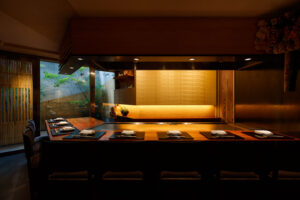
Chef Nakamura had his teppan custom-made by a firm in Higashi, Osaka, to his specifications. Many teppanyaki cooks believe that a thicker teppan is preferable, but he disagrees. During his years of cooking, he discovered that 24 mm thick is the right size for his distinctive way of cooking.
It is a quiet restaurant with plenty of personal space between tables, making it ideal for a romantic meal. The Japanese maples in the yard, which can be seen via the wide windows, make you forget you are in the basement. Yoshiko Tsubouchi, a printer, created sequential murals depicting the lunar cycle. Kaori Nakamura, Nakamura’s wife, runs the show here with her exquisite service and sommelier talents, matching you with the appropriate wine or sake.
Read Here: Best Pregnancy Pillow In 2021 For Mothercare
9. Dhaba India
As you approach Dhaba India in Tokyo, the perfume of Indian spices can be detected from afar. The bright carpets, dark blue walls, turquoise tiles, and south Indian songs in the background create a unique environment that attracts amorous couples from all over Tokyo.
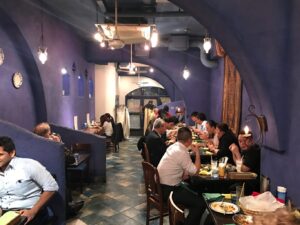
This is one of Japan’s greatest south Indian restaurants, serving a wide variety of dosa and other south Indian specialties such as idli, vada, lemon rice, curd rice, uthappam with sambar, and coconut chutney.
Daba India is known for its chicken, fish, and prawn curries, which are considered to be among the best. If curries are not your thing, try one of the tandoori plates on offer! This is the best Indian restaurant in Japan.
10. Modern Toilet Restaurant
Toilet restaurant in Japan? You heard it right. Do not anticipate authentic Taiwanese cuisine if you order hot pot meals from a toilet bowl. There will also be no Michelin-star cuisine, as one would anticipate from a molecular gastronomy establishment. The cuisine, on the other hand, is good enough to compete with pub and grub fare. The toilet is certainly the main attraction.
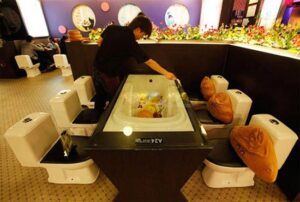
Toilet Chicken Curry, Toilet Curry Pork Chop, and Thai Toilet Pepper Chicken are just a few of the traditional toilet-themed recipes. You may also select from a variety of hot pot soups, including Japanese, Korean, Sichuan, and vegetarian toilet pots. Because all of the hot pots are presented in highly photogenic restrooms, they are perhaps the most popular items on the menu.
Dine-In The Best Restaurant In Japan
Japan is a wonderful land of colorful cuisines. If you are in Japan, then you can go through our list and choose the best restaurant in Japan.
